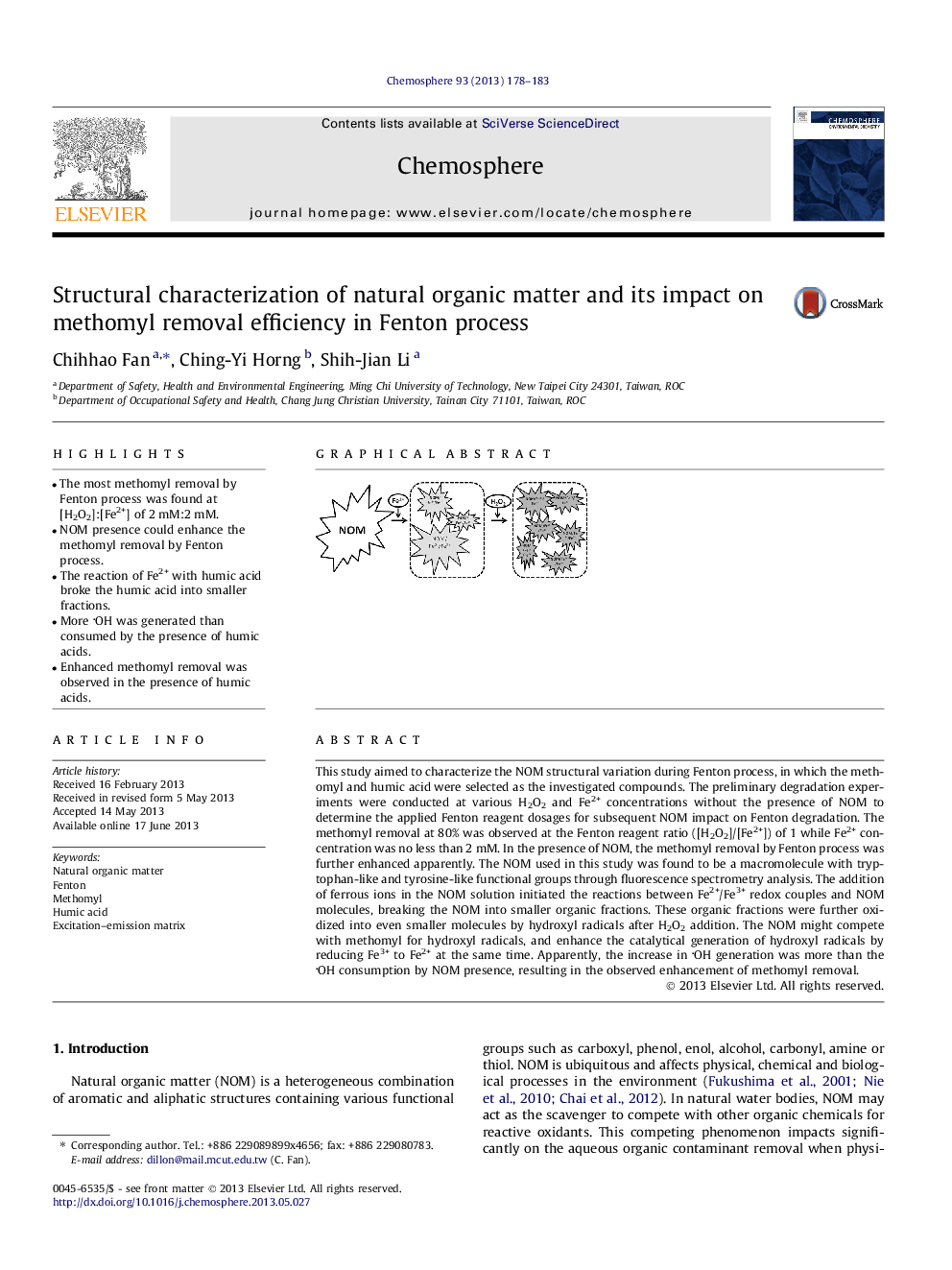| Article ID | Journal | Published Year | Pages | File Type |
|---|---|---|---|---|
| 4409028 | Chemosphere | 2013 | 6 Pages |
•The most methomyl removal by Fenton process was found at [H2O2]:[Fe2+] of 2 mM:2 mM.•NOM presence could enhance the methomyl removal by Fenton process.•The reaction of Fe2+ with humic acid broke the humic acid into smaller fractions.•More OH was generated than consumed by the presence of humic acids.•Enhanced methomyl removal was observed in the presence of humic acids.
This study aimed to characterize the NOM structural variation during Fenton process, in which the methomyl and humic acid were selected as the investigated compounds. The preliminary degradation experiments were conducted at various H2O2 and Fe2+ concentrations without the presence of NOM to determine the applied Fenton reagent dosages for subsequent NOM impact on Fenton degradation. The methomyl removal at 80% was observed at the Fenton reagent ratio ([H2O2]/[Fe2+]) of 1 while Fe2+ concentration was no less than 2 mM. In the presence of NOM, the methomyl removal by Fenton process was further enhanced apparently. The NOM used in this study was found to be a macromolecule with tryptophan-like and tyrosine-like functional groups through fluorescence spectrometry analysis. The addition of ferrous ions in the NOM solution initiated the reactions between Fe2+/Fe3+ redox couples and NOM molecules, breaking the NOM into smaller organic fractions. These organic fractions were further oxidized into even smaller molecules by hydroxyl radicals after H2O2 addition. The NOM might compete with methomyl for hydroxyl radicals, and enhance the catalytical generation of hydroxyl radicals by reducing Fe3+ to Fe2+ at the same time. Apparently, the increase in OH generation was more than the OH consumption by NOM presence, resulting in the observed enhancement of methomyl removal.
Graphical abstractFigure optionsDownload full-size imageDownload as PowerPoint slide
